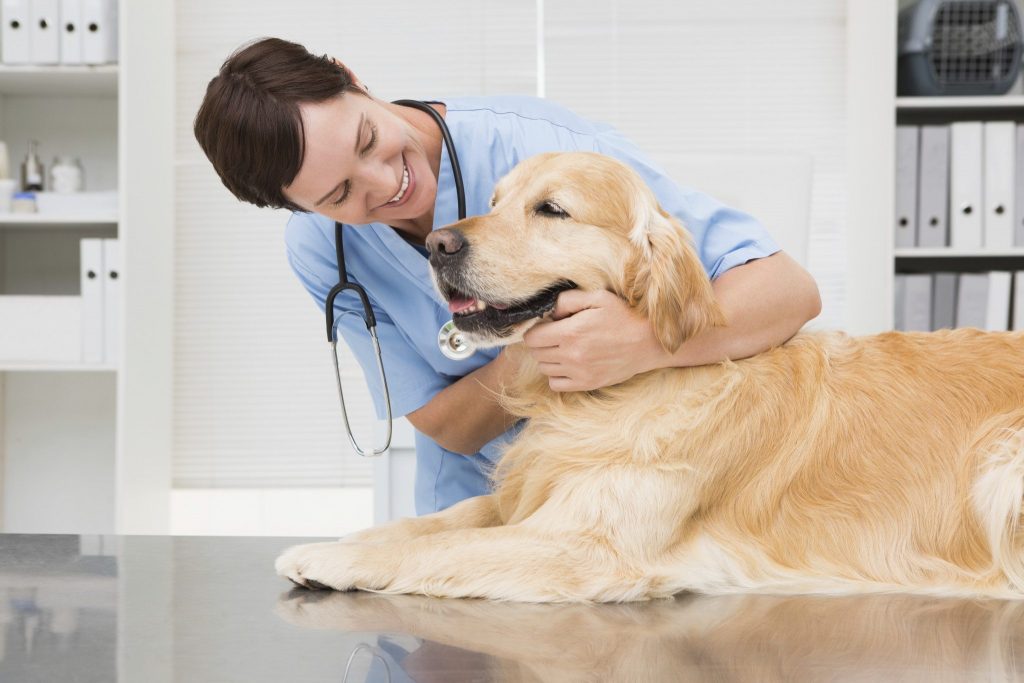Vet Stress
Walk into any veterinarian office and you will smell all sorts of funny smells, see other animals and hear scary sounds. Well, that goes double for your pet. Going to the veterinarian’s office can be stressful with slippery floors and exam tables. Simply taking your pet’s temperature for the first time can be nerve-racking for the most laid-back dog or cat.
Learning to help your pet tolerate a trip to the veterinarian for an examination is one of the best things you can do for him or her. The following are tips that will help both you and your pet be prepared for those trips to the vet’s office:
6 Steps On How To Get Ready To Visit The Vet
1. Plan A Fun And Happy Social Visit To Your Veterinarian First– you can schedule a time to simply stop by and say hello. Bring your pet in to introduce him or her to your veterinarian. Perhaps bring a special treat for the technician and veterinarian to give to your pet. A fun and happy social visit will definitely go a long way in reducing the stress level of your pet for future visits. You may also want to stop by on occasion to reduce anxiety in your pet so they can learn to look forward to visits to your veterinarian.
2. Take The Time To Imprint – when pets are petted, touched and handled all over on a daily basis, it will feel less invasive to them when being touched during an examination. Plus, it will give you an opportunity to notice any swelling, lumps or tender areas that may indicate a health situation. Make it a part of playtime or when you have some quiet time, pet him or her all over or give a gentle massage. Take note of any sensitive areas on your pet. Ask other family members or friends to touch your pet as well. The more your pet is accustomed to being touched by different people, the easier it will be for all involved at the veterinarian’s office.
3. GENTLY Squeeze Their Skin – you can gently squeeze the skin behind their shoulder or above their paw, NOT hard, of course, but enough that a little needle pinch for drawing blood or vaccinations will not be a totally weird experience for your pet. Remember, gentle squeezes – always. You also want your pet to feel comfortable having other parts of his body handled like paws, ears and eyes. The ASPCA offers some great advise on how to desensitize your pet. Remember, never to force your pet to submit to handling. This could actually intensify your pet’s fear.
4. Brush Their Teeth – you can begin by playing with your pet’s mouths so he or she is used to having their mouths handled. Brush your pet’s teeth regularly as it can really extend the time between teeth cleanings. It can make a difference between having to give your pet anesthesia or being able to perform a teeth cleaning with your pet awake. Always use toothpaste for pets – do NOT use people toothpaste because it is not safe. Plus, pet toothpaste comes in a variety of flavors such as malt, beef or chicken, making it more enjoyable for your pet. You can also place a dab of peanut butter on your finger and rub your pet’s gums so that he or she gets used to having a finger in their mouth.
5. Get Your Pet Used To Being Picked Up – during routine visits to your veterinarian, your pet will be lifted and placed on an exam table. Being lifted, by itself, can be a stressful experience. Practice doing that at home when it is time for a grooming, for example. Smaller pets are easier to lift so be careful if your pet is quite large. Your veterinarian or trainer can show you how to lift your pet safely.
6. Go To Basic Training For Puppies – many veterinarians and pet facilities offer basic training classes that help you teach your new pet to sit, lie down and walk properly on a leash. Plus, it gives them an opportunity to be around other animals, making it less stressful for them when they walk into a veterinarian’s office.
Learning basic behaviors such as sitting down and lying down can make it easier on both your pet and veterinarian during an exam. Teaching them simple behaviors can eliminate the need for having to physically move your pet around on an exam table or make it easier for you to give them a medication or treatment, if needed. Take toys and treats with you when you go to the veterinarian’s office – it will give your pet something else to focus on and help them remain calm.










